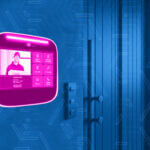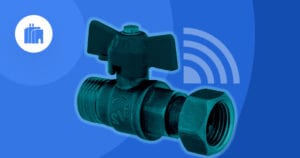
Smart buildings are fast becoming the norm across the globe. According to Mordor Intelligence, the smart building market is expected to record a compound annual growth rate of over 23 percent over the period of 2019 – 2024. Increasingly, sophisticated smart cities are being developed by nations around the world to improve efficiency, reduce operating costs and generally make life easier for residents and business owners.
In 2020, the availability of IoT-enabled smart building solutions that leverage connected sensors will continue to influence how smart building vendors rethink their business models to take full advantage of this technology. That being said, smart buildings present a set of unique challenges that building managers also have to keep in mind when implementing a solution, like the need to penetrate dense building materials. Because of that, long-range and low power capabilities have become essential to ensure sensors do their intended job like detecting danger, optimizing utility usage and improving the safety and convenience of everyday living.
Here are a few specific ways connected IoT solutions will continue to drive the growth of smart buildings.
Creating Efficient Energy Management Solutions
Energy costs are rapidly increasing, and environmental issues continue to be a major concern, so there’s increasing pressure on building managers to provide more energy-saving solutions within their facilities.
For example, by using sensors, smart thermostats can now monitor indoor and outdoor air temperature, humidity and the presence of people in a room. This data can be used to intelligently control the HVAC systems inside buildings so that they can cool or heat rooms only when necessary. Smart meters also enable more precise monitoring of energy consumption throughout a building, while using smart electric plugs allows tenants to detect high-energy devices and take appropriate actions to reduce their consumption.
LoRa® devices and the LoRaWAN® protocol make it easy for building managers to implement an easy and economical energy-saving smart building system. Designed to support robust, long-range wireless communications, LoRa devices can connect energy management systems with smart thermostats, lighting controls, smart outlets and other energy-aware devices.
Predictive Maintenance
Many facilities leverage preventative maintenance to ensure equipment is running correctly. This usually involves routine inspections and making assumptions about the status of the equipment and how often it’s used. Connected sensor technology takes this concept to the next level by providing a more granular level of insight on the technology maintaining a smart building, including equipment temperature, power and sound.
An example of this is the monitoring of ventilation fan motors which typically operate for 24 hours a day in a commercial building. Different mechanical harmonics are identified as they age, and, by using LoRa-based sensors and a modem, the health of the motor and its life cycle position can determine when a problem appears to be developing so maintenance can be scheduled at the most convenient time before a bigger problem emerges.
Real-Time Insights
Access to real-time data is one of the biggest benefits of deploying a smart building solution because it allows business managers to visualize improvements around the structure and make actionable decisions. For example:
- Smart sensors in buildings make everyone safer by monitoring and reporting a wide range of issues, including fire alarms, office air quality, dangerous chemical detection for industrial buildings and structural integrity.
- Real-time occupancy, geolocation and foot traffic data can be used to identify spatial usage patterns, allowing space efficiency optimization and reconfiguring offices and retail location layout based on real usage data.
- Occupants can be equipped with badges to control access, but this also provides presence information. Building managers can use this information to detect intrusion and identify open entry points that should be closed, and remote control allows them to keep a close eye on their building without setting foot on site.
Heading into 2020, IoT technology continues to present new opportunities for the management of commercial and residential buildings. With connected devices and powerful analytics, building managers can implement solutions that drive efficiencies and offer new opportunities for both sustainability and savings.





 Related Podcast Episode
Related Podcast Episode




 Related Applications
Related Applications


 Latest IoT News
Latest IoT News







